Winder of the front seat belt its fastening on the middle pillar of the body at the bottom
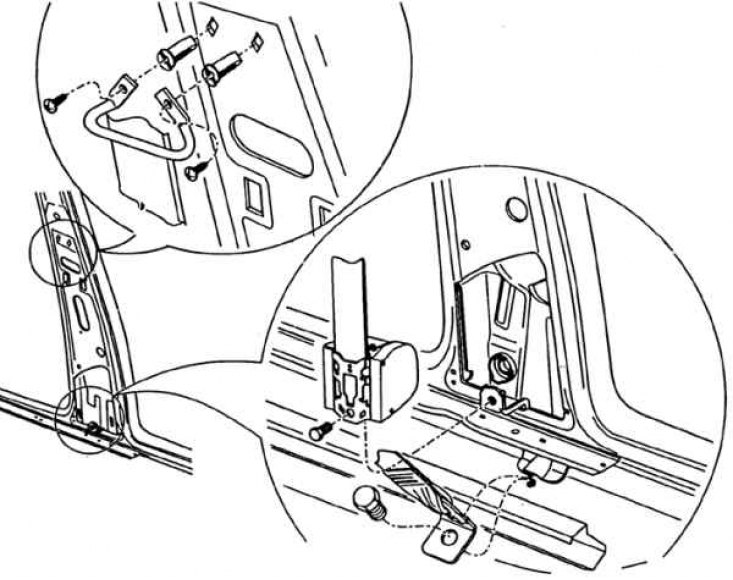
Holder with lock - front seat belt fastened to the seat
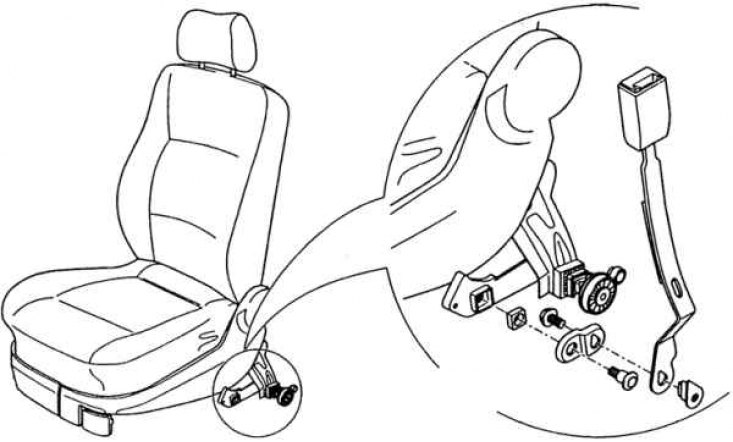
Height-adjustable front seat belt catcher on B-pillar
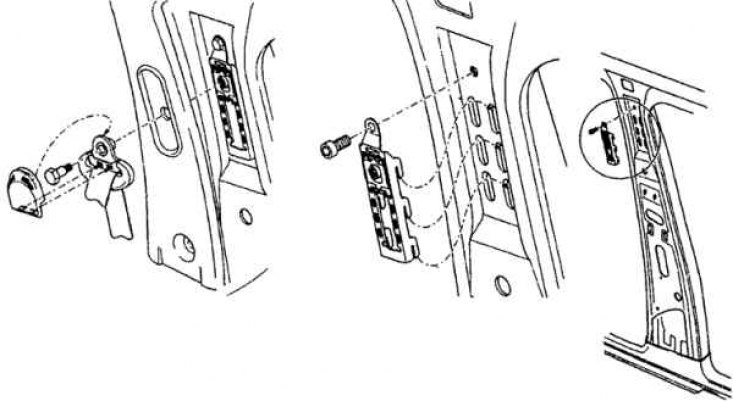
Front seat belt lock and its operation scheme
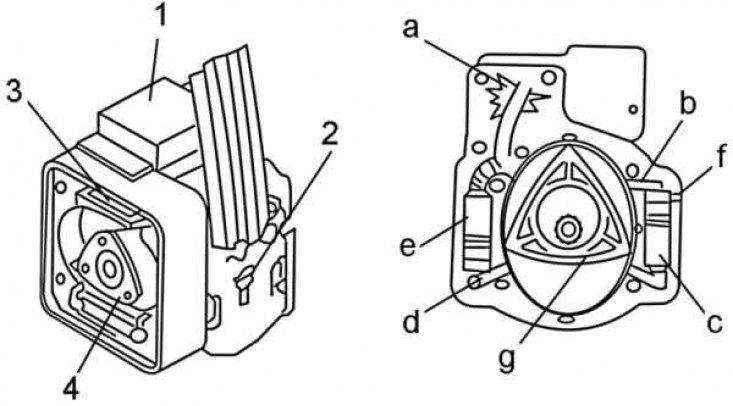
1 - mechanical starter; 2 - winding mechanism; 3 - the first gas generator; 4 - rotary piston; a - ignition of the first gas generator; b - the first bypass channel; c - the second gas generator; d - the second bypass channel; e - the third gas generator; f - outlet channel; g - rotary piston
Rear seat belt winder
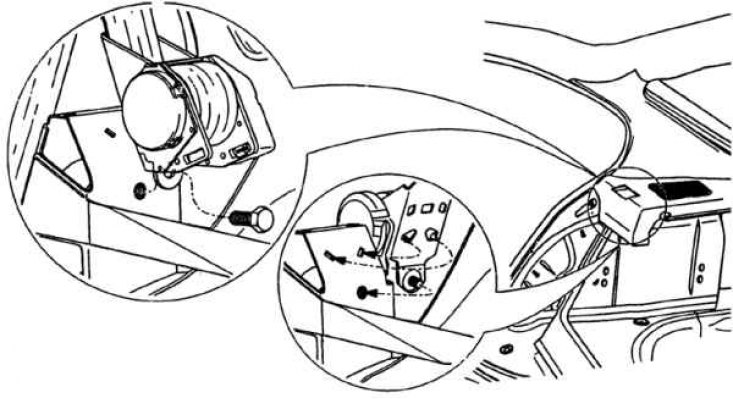
Rear seat belt attachment on the side of the body
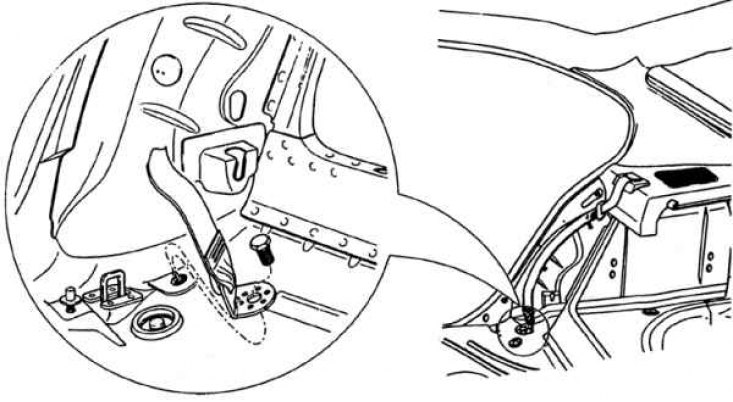
In accordance with the agreement on the operation of vehicles and international instructions, the manufacturer supplies Skoda Octavia cars with seat belts for all five seats. There are two types of seat belts for the front seats. The first version of the belts is self-winding, the second version is self-winding belts with a blocker. The second version must be installed on cars equipped with airbags - airbag. The seat belts of the front seats are three-point. The winding device is installed in the cavity of the lower part of the middle pillar of the body (see fig. Winder of the front seat belt its fastening on the middle pillar of the body at the bottom). The upper grip on the middle pillar is adjustable in height. The belt lock is located on the front seat frame (see fig. Holder with lock - front seat belt fastened to the seat). Mounting bolts and grips are threaded 7/1620 UNF-2A to meet international standards. The tightening torque of these bolts is 35 Nm.
Worth mentioning is the upper catch of the belt tug mounted on a sliding holder. It is an integral part of the leading profile, fixed with three pairs of hooks pre-pressed into the middle rack. The leading profile is screwed to the rack with one bolt. A towing vehicle is bolted to the sliding holder (a loop) belt. The bolt is covered with a plastic cap. After tilting the towing vehicle, the sliding holder can be moved in the bar. The middle reclining position is held by a flat spring. The bar has five fixed positions of movement in height with a total range of 94 mm (see fig. Height-adjustable front seat belt catcher on B-pillar). After being released from the lock, the belt is automatically wound around the winding element.
In the second version, i.e. for belts with a blocker, all parts are the same except for the winder. It is combined with a blocker.
The task of the blocker is to instantly tighten the seat belt if the car reaches a deceleration of more than 5 g within 10 milliseconds (g \u003d 9.81 m / sq. s. - acceleration of gravity). If the lock is activated, the belt will wind up by almost 120 mm. The necessary force is generated by a system of gas generators.
The figure The front seat belt lock and its operation diagram shows a diagram of a winder with a lock. The blocker works on the principle of a rotary piston with three working chambers and three gas generators. The lockout function is initiated by a mechanical sensor when the above vehicle deceleration values are reached. The first generator is ignited by the mechanical action of the striker on the impact fuse. The gas explosion sets the rotary piston in motion. When the working pressure reaches the first bypass and outlet channel, the second generator is ignited again with the help of a striker. The gas pressure turns the rotary piston. When the second bypass and outlet channel is reached, the process is repeated - the third gas generator is ignited. Thus, the piston will receive a third impulse and, turning, will approach the last bottom dead center. The belt will lock in 13 milliseconds.
Seat belts for both rear outer seats are also three-point and self-tensioning (see fig. Rear seat belt winder, fig. Rear seat belt attachment on the side of the body). The rear seat in the middle is equipped with only a two-point lap belt with a manually set length.
If the belts have been in an accident, they must be replaced with new ones during repair, including the winder. The same must be done in case of damage to the belt or its part. If the bollards have been used, the seat belts should ALWAYS be replaced with new ones in their entirety. The seat belts must not be disassembled. Essentially, any unskilled assembly and disassembly of belts is prohibited, the parietal strap can only be cleaned without dismantling it from the car, namely with conventional detergents designed for washing textiles made of artificial fibers.
